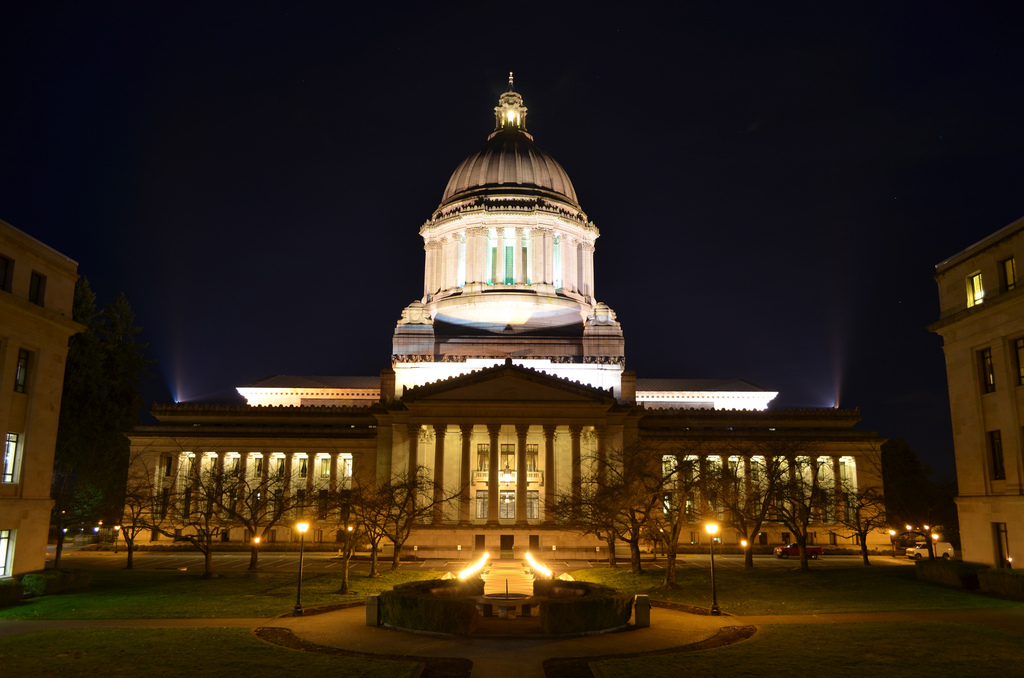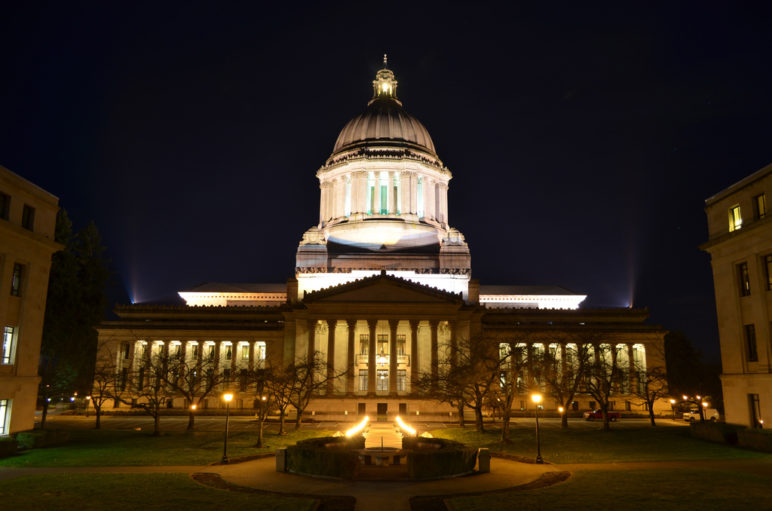This year, in response to the state’s ever worsening housing shortage and residents’ increasing concern over home prices and rents, the Washington legislature took up far more housing bills than ever before: the compilation below covers a whopping 50 bills (and we invite you to note in the comments any we missed).
That’s a lot, but what made it even more promising is there were bills covering all three of the policy pillars necessary to take on a housing crisis—what are commonly referred to as the three Ss: supply, subsidy, and stability. Alone, each “S” is insufficient; together, they form a mutually reinforcing suite:
- Supply: More new homes to reduce the shortage and cool rents and prices
- Stability: More protections to safeguard those with the least housing security
- Subsidy: More subsidies to help those who can’t afford what the market offers
Most housing bills only address one of the three Ss and need not be expected to cover the others, too. Their impact is maximized when bills from all three categories pass as a package. Legislators never had more options to work with.
Below we summarize the 50 bills we tracked this session. Where you see / marks, we are indicating companion bills between the House and Senate. For some bills, we link to longer explainers we or partners have written on the topic.
1. Supply Bills
Supply bills loosen overly restrictive zoning laws and regulations that needlessly impede home-building. Adding homes—especially in places with lots of jobs that drive high demand for housing—keeps average prices and rents lower for everyone. Supply measures support subsidy measures because lower prices and rents mean market-rate housing is more affordable to more people, which reduces the need for funding to subsidize housing. And when housing is abundant, stability measures such as rent stabilization are less likely to backfire by squeezing the supply of rentals and will still prevent gouging.
Washington’s supply bills for 2023 fall into two categories: zoning reform and permitting streamlining.
A. Zoning Reform
These bills reform zoning laws and other local codes that make it illegal or cost-prohibitive to build the many types of housing, including so-called “middle housing” like duplexes, triplexes, backyard cottages, and small apartment buildings, that Washington needs to overcome its massive shortage of homes.

Legalize middle housing in residential neighborhoods
PASSED HOUSE AND SENATE HB 1110 legalizes duplexes, fourplexes, or sixplexes, depending on city size and proximity to transit, on most residential lots in Washington’s urban communities, subject to the same building form and site restrictions that apply to single-detached houses. Read a run down of what the bill does here, and more about the benefits of middle housing from Sightline and the Black Home Initiative.

Make it easier for homeowners to add ADUs (three bills)
PASSED HOUSE AND SENATE HB 1337 lifts local barriers on ADUS by ending renter bans (requirements for owners to live on-site), capping impact fees and parking mandates, legalizing two ADUs per lot, and setting baseline standards on minimum lots size, ADU size and height, and more, read about the details here.

DEAD SB 5235 is a weaker bill that ends renter bans with exceptions, legalizes detached ADUs and two ADUs per lot on larger lots, but leaves ADU parking mandates untouched.


Legalize lot splitting to create lots for smaller, less expensive houses
DEAD: HB 1245 would have allowed homeowners to sell off part of their house lot for the construction of another house, authorizing subdivision into lots as small as 1,500 square feet, creating more affordable homeownership choices, while also providing financial options for existing owners. Read more from Sightline and from the Black Home Initiative.
The House Housing Committee passed HB 1245 unanimously, and then it passed the House 96 – 2. Subsequently, the Senate Local Government Committee declined to bring the bill to a vote before cutoff.

Legalize more homes and jobs near transit
DEAD As introduced, SB 5466 would have legalized midsize apartment buildings within three-quarters of a mile from bus stops with frequent service, and larger buildings within a quarter-mile of light rail stations, enabling the creation of modest, convenient, and affordable workforce homes that Washington cities need, close to where residents work, learn, and find recreation and community. Read more.
The Senate passed a slightly narrowed version by 40 – 8. Then the House Housing Committee passed amendments that severely cut both the level of density legalized and the amount of land near transit effected, and also added an inclusionary zoning requirement that all housing developments set aside 20 percent of their units at rents affordable to 60 percent of area median income. Proposed floor amendments would have brought back some of the density and extent, and lowered the inclusionary requirement, but the House declined to bring the bill to a floor vote before cutoff.

Make parking optional near transit
DEAD HB 1351 / SB 5456 would have eliminated local requirements for off-street parking in new housing or commercial developments located within a half-mile of transit stops with 15-minute service, and within a quarter-mile of stops with 30-minute service. Read more.
The House Local Government Committee passed HB 1351 after amending it to reduce the distance from transit from a half-mile to a quarter-mile, but the bill then died in the Rules Committee. The Senate Local Government Committee heard the bill but then declined to bring it to a vote.

Loosen restrictions on adding housing to existing buildings
PASSED HOUSE AND SENATE HB 1042 makes it easier to add housing within the envelope of existing multifamily buildings by exempting the added units from parking mandates, density limits, and other potential regulatory barriers. HB 1042 passed the House 96 – 0 and the Senate 45 – 3.

Legalize single-stair apartment buildings up to six stories
PASSED SENATE AND HOUSE As introduced, SB 5491 would have established building code cities can adopt to raise the height limit of buildings with a single stairway from the current typical limit of three stories to (a) five stories for purely residential buildings and (b) six stories for buildings with commercial uses on the first floor, all subject to size restrictions and additional fire safety measures. Read more.
SB 5491 passed the Senate 46 – 2. The House Housing Committee amended it to be less specific, requiring the State Building Code Council to develop recommendations for single-stair buildings up to six stories, and to adopt those changes by July 2026. The bill then passed the House 96 – 1.

Reform various codes for small-scale multifamily housing
DEAD As introduced, HB 1167 would have: instructed the Washington Building Code Council to modify the residential code so that it applies to housing with up to six units; lifted setback requirements and set guardrails to prevent design standards on middle housing that are more onerous than those that apply to detached houses; established code for single-stair apartments; and exempted from SEPA most urban infill housing developments.
After the setback and SEPA provisions (redundant with SB 5412) were amended out, and the design review language of HB 1026 (see description below) was amended in, HB 1167 passed the House 95 – 0. The bill passed the Senate Housing and Ways & Means Committees without major changes, but then died in the Senate Rules Committee.

Create special regulations for middle housing
DEAD HB 1401 authorizes local governments to create design standards and an expedited permit process for houses, duplexes, triplexes, and ADUs no larger than 1,801 square feet per unit.

Reform regulations for small-scale condominiums (two bills)
PASSED SENATE AND HOUSE SB 5258 modifies condo laws on construction defect actions and warranties, deposit requirements, and local government planning, and would exempt condo sales to first-time homebuyers from the real estate excise tax. Also, to reduce unfair fee burdens on condo construction, it requires local governments to scale their impact fees based on the size of the housing unit. Read more about previous condo reform.

PASSED SENATE AND HOUSE SB 5058 exempts buildings with 12 or fewer units and no more than two stories from the definition of “multi-unit residential building,” which eliminates building enclosure design and enclosure inspection requirements that add excessive costs to small scale-condo developments.


Establish permitting targets for new housing and penalties for failure to meet them
DEAD SB 5609 instructs the Department of Commerce to calculate the amount of housing each local government needs to produce by 2033 to eliminate the state’s housing shortage and to require them to approve permits for that amount of housing. Those jurisdictions that fail to do so would become ineligible to receive from the state their portion of the real estate excise tax.

Allow more housing as a climate strategy
PASSED HOUSE AND SENATE HB 1181 makes a broad set of changes to the Growth Management Act to address climate change, including a provision for local governments to legalize higher-density housing.
B. Permit Streamlining
These bills enable the production of more and lower-cost housing by reducing the delay that excessively long permitting timelines, design review, and environmental review can cause.

End design review of housing by volunteer boards
DEAD HB 1026 prohibits local governments from requiring design review of proposed housing developments by boards composed of volunteers, limiting local design review to an administrative process conducted by local, professional government staff. Read more.

Reform the environmental review process
PASSED HOUSE AND SENATE SB 5412 exempts from State Environmental Policy Act review proposed housing developments within urban growth areas that comply with local Comprehensive Plans. Read more.

Streamline local design review
PASSED HOUSE AND SENATE HB 1293 requires local design review to use “clear and objective” standards that don’t reduce development capacity otherwise allowed, and the process cannot require more than one public meeting.

Support local governments in streamlining their permit processes for new housing
PASSED SENATE AND HOUSE SB 5290 establishes grant programs for local governments to reduce permit review timelines and to support local governments’ transition from paper-based to software/web-based systems.

Establish permit approval deadlines and penalties for failure to meet them (three bills)
DEAD SB 5473 sets maximums for the number of days local governments can take to approve permit applications for housing construction and requires a refund of 20 percent of the permit fee if the deadlines are not met.

DEAD HB 1519, similar to SB 5473 above, establishes new standards for permit completeness, sets a deadline of 120 days for permit processing (with some exceptions), and requires a partial refund of 10 to 20 percent of the permit fee if the deadline is not met.

DEAD HB 1611, related to the above two bills, establishes project-size-dependent permit approval deadlines (120, 180, or 270 days). If deadlines are not met, it establishes automatic approval of permits for affordable projects and prohibits local assessment of the real estate excise tax on the first sale of all projects.

Require reporting on housing permit approvals that exceed 120 days
DEAD HB 1449 requires counties and cities larger than 20,000 to report to the Department of Commerce on permit approvals that exceed 120 days, including explanations for why.

Ease impact fee deferrals
DEAD HB 1468 reduces red tape by repealing the state requirement for home builders to grant local governments a lien on a newly built home in order to be allowed to defer their payment of impact fees assessed on the home until after construction is completed.
2. Stability bills
Stability bills safeguard housing security in conditions of rapid change. Most commonly, they provide protections for renters, such as limits on rent increases. But they also include policies to help first-time buyers to attain the security of homeownership and existing owners to stay in their homes. These policies provide near-term support, in contrast and complement to the supply measures supporting construction of new housing—both market-rate and subsidized—which are longer-term solutions that play out over years.
A. Renter protections

Lengthen notice requirements for rent increases and limit fees
DEAD HB 1124 requires 180 to 220 days’ advance written notice for any rent increase of more than 5 percent, and caps first month and security deposit fees at no more than one month’s rent.


Limit rent increases and fees through the landlord-tenant act
DEAD HB 1388 applies the Consumer Protection Act to the Residential Landlord-Tenant Act to cap annual rent increases at the rate of inflation or 3 percent, whichever is greater, up to a maximum of 7 percent. It also caps first month and security deposit fees at no more than one month’s rent and prohibits differential treatment for month-to-month leases.

Limit landlord withholding of damage deposits
PASSED HOUSE AND SENATE HB 1074 establishes rules to ensure that landlords fairly and promptly return tenants’ damage deposits after they move out.

Strengthen tenant rights in eviction processes
PASSED SENATE AND HOUSE SB 5197 modifies eviction notice and eviction legal process requirements to give tenants more options and leeway.

Establish a rental assistance voucher program
DEAD HB 1817 / SB 5741 creates a “Housing Gap Voucher Pilot Program” to provide rental assistance to qualifying seniors, low-income families, and members of marginalized communities living in manufactured or rental housing, to be administered by Public Housing Authorities.

Monitor rents and vacancy
DEAD SB 5060 requires landlords to register rentals and vacant units, and to report their rental rates to the Department of Commerce, which will create a website that tracks rental housing inventory and rent data.
B. Homeownership support

Support first-time homebuyers harmed by historical discriminatory covenants
PASSED HOUSE AND SENATE HB 1474 establishes a Special Purpose Credit Program, funded by a $100 document recording fee, to provide down payment assistance and closing cost assistance to first-time homebuyers with income less than the area median who were themselves, or are descendants of someone who was, excluded from homeownership in Washington by a racially restrictive real estate covenant prior to April 11, 1968 (passage of the Fair Housing Act). Read more.

Support homeownership for essential workers
DEAD HB 1633 creates the Home for Heroes Program to provide down payment assistance to people earning up to 120 percent of the area median income and who are employed in law enforcement, firefighting, emergency response, healthcare, social work, childcare, or the armed forces.

Update the state property tax exemption on homes owned by low-income seniors and disabled veterans (two bills)
DEAD SB 5250 adds certain homeowner healthcare expenditures to the determination of their eligibility.

DEAD HB 1560 adjusts income eligibility levels and establishes grants to help homeowners navigate the program.

Increase housing security for mobile home owners (three bills)
DEAD HB 1810 creates a program to provide assistance for rent on mobile home lots to mobile home owners who earn up to 80 percent of the area median income, covering up to $200 per month or half the total lot rent, whichever is less.

PASSED HOUSE AND SENATE HB 1771 strengthens the rules governing relocation assistance provided by the Mobile Home Relocation Assistance Program for displaced mobile home park residents.

PASSED SENATE AND HOUSE SB 5198 strengthens rules to give mobile home owners the opportunity to purchase mobile home communities when owners propose closure or conversion.
3. Subsidy bills
Subsidy bills increase funding to deliver more homes to those who still can’t afford what the private market can provide. Subsidy is most commonly thought of as public dollars spent on building and operating affordable housing, but it also includes targeted tax and fee exemptions.
The high cost of housing construction and land in Washington makes it impossible to produce new housing that is affordable to those on the lowest end of the income spectrum. However, because housing construction is so expensive, the public subsidy required to produce it at scale is enormous—which is why concurrent supply policies are critical to lessen the need for subsidy. And why concurrent stability policies are critical to protect low-income people who can’t get into subsidized housing because there isn’t enough of it.
A. Funding for housing construction and land

Fund affordable housing through the Capital Budget
PASSED SENATE AND HOUSE SB 5200 / HB 1147 Washington’s 2023 – 25 Capital Budget allocates $570 million for affordable housing, including:
- $400 million to the Housing Trust Fund (the highest amount ever);
- $60 million to connect affordable housing developments to infrastructure;
- $50 million for projects designed to increase the supply and affordability of transit-oriented housing;
- $40 million for the Housing Finance Commission Land Acquisition Program;
- $14.5 million for youth shelters and housing; and
- $5 million for landlord mitigation.

Increase the REET to fund affordable housing
DEAD HB 1628 establishes a new 4 percent real estate excise tax (REET) on the portion of sales over $5 million and authorizes cites to enact an additional 0.25 percent REET, with revenues to be used for affordable or supportive housing development and operation.

Boost bonding capacity to fund affordable housing
DEAD HB 1149 / SB 5202 authorizes the State Finance Committee to issue up to $4 billion in general obligation bonds to finance programs and projects that address housing insecurity. If passed, it still requires approval by voters at the state’s next general election.

Tax short-term rentals to fund affordable housing
DEAD SB 5334 authorizes local governments to impose a special excise tax of up to 2 percent on the furnishing of short-term rentals and to use those tax revenues only for affordable housing programs.

Secure land for affordable housing near transit
DEAD HB 1111 authorizes cities to create “Transit Benefit Districts,” in which they can acquire land for the future construction of affordable housing. It also instructs the state’s Housing Finance Commission to establish a grant program to help fund these land acquisitions.

Facilitate the use of surplus property for affordable housing
PASSED HOUSE AND SENATE HB 1695 clarifies the definitions of affordable housing that qualify as a “public benefit” to authorize governments and public agencies to sell publicly owned surplus property at discounted prices for affordable housing development.

Improve affordable housing program management
PASSED SENATE AND HOUSE SB 5301 makes a number of technical and bureaucratic updates to how the Department of Commerce manages various affordable housing subsidy programs.
B. Tax exemptions and fee waivers
Expand the MFTE (three bills)
Three bills broaden the state’s multifamily tax exemption (MFTE) program that waives property taxes on buildings that reserve a specified portion of their units at prices or rents affordable to low-income households.

DEAD HB 1350 expands MFTE to existing buildings, not just newly built ones, that reserve 30 percent of units at rents affordable to people making 80 percent of the area median income.

DEAD HB 1343 expands MFTE to buildings at least 25 years old that reserve 25 percent of units at rents affordable to people making 50 percent of the area median income.

DEAD SB 5118 extends the MFTE term to 99 years for a higher affordability requirement of 35 percent of units reserved as affordable for people making 80 percent of the area median income, and applies to rehabilitated or converted existing buildings.

Broaden the property tax exemption for affordable housing
DEAD HB 1052 expands the types of affordable housing projects eligible for a property tax exemption to include developments supported through the local option REET for affordable housing.

Exempt affordable ADUs from property tax
PASSED SENATE AND HOUSE SB 5045 create a property tax exemption for ADUs to owners who offer them at rent affordable to people making 50 or 60 percent (respectively to each bill) of the area median income.

Reduce utility costs for affordable housing
PASSED HOUSE AND SENATE HB 1326 authorizes local waivers of utility connection charges for affordable and supportive housing owned by nonprofits and housing authorities.










Ruth
So far as I can tell, all of these bills are written to clear trees out of the way of developers. There is no tree protection allowed in neighborhood lots being redeveloped. Did I miss something?
The original HB 1078 did nothing to resolve the conflict between trees and housing. The idea was for all trees to be removed from construction sites at the developers’ discretion. The developer then would pay into a fund for a ‘tree bank’ to be established with new young trees.
Even developers spoke against this bill in the hearing. Of course their fear was that buildable land would wind up as tree banks.
Fortunately HB 1078 has been defanged in committee. The bill now establishes technical advice for cities wanting to establish tree banks.
Steve Erickson
The lot splitting bills (unless they’ve changed since the last time I looked) gut GMA planning by cities and counties. They instantly result in potential doubling or even tripling potential population while prohibiting counting that increase for GMA planning purposes. These and other such bills (i.e., the clear trees at will bills) are the largest assault on GMA and local planning I’ve seen since its adoption in the early 1990s.
One other thing. My partner inherited her parents double wide mobe on 5 acres. We’re on Whidbey. We rented it out at seriously local people rates (i.e., $700 per month with potential work trade for most of that). The renter fell down the drug rabbit hole. Despite that, he was a contractor and COVID really shouldn’t have impacted his income. We were able to recover a lot of the back rent through COVID relief funding. As soon as that ran out he continued not paying anything. We promptly tried to evict him and it was an 8-month saga requiring multiple court appearances and lots of fees to finally get him out. And he trashed the place. Three months later and we’re still cleaning and repairing the place.
Mom and Pop landlords cannot afford this. We’re thinking of selling the place, but if we do rent it again (we are scared of doing this) it’ll be market rate first, last, and deposit, which will exclude lots of local working people. If annual rent increases are limited to 3% or inflation and damage deposits to one month’s rent, sensible small landlords are just going to start the rent with a very very high cushion. Its the only way they can protect themselves. Not all landlords are evil greedy money gougers. We also need protection.
tom
Remove the blanket requirement that detached ADU’s have a seperate Electrical Meter. In my case, a new underground Seattle city light metered electrical service will add an additional 25k in costs. Ridiculous. An owner should be able to self-meter if desired. There’s many available options that can be professionally installed at a fraction of the above costs.